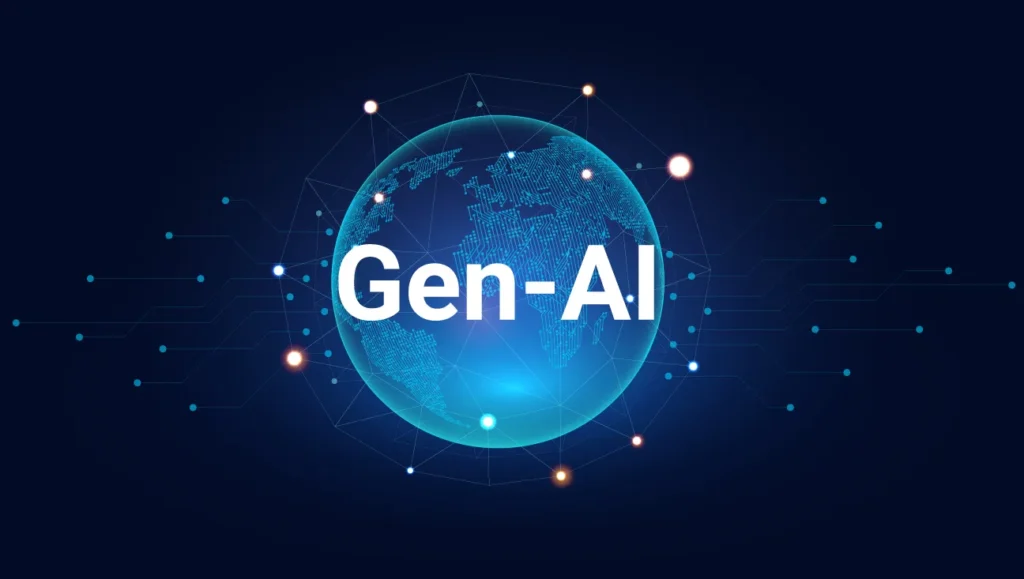Introduction
The landscape of artificial intelligence has seen a transformative leap with the rise of Generative AI. What once seemed like science fiction—machines that write, draw, code, and think creatively—has now become a practical tool reshaping industries.
Whether you’re a developer, analyst, or tech enthusiast, learning how to build with Generative AI is no longer optional—it’s a career-defining opportunity. Unlike traditional AI systems that analyze and predict, Generative AI systems create new content: from articles and artwork to code and conversation.
This guide outlines a self-paced, project-based roadmap for becoming proficient in Generative AI. The focus is on practical implementation: using pre-trained models, designing intelligent prompts, and deploying AI-enhanced applications.
Phase 1: Grasping the Fundamentals
Why Generative AI is Different
Traditional AI models are built to classify, predict, or cluster data. Generative AI models, on the other hand, are creators—they synthesize content based on patterns they’ve learned.
Instead of training models from scratch, developers now leverage foundation models (like GPT-4, Claude, or Gemini) through APIs. The shift is from deterministic outputs to probabilistic and often creative responses. This opens up new challenges and opportunities for system design, testing, and user interaction.
Core Prerequisites to Get Started
You don’t need a Ph.D. in AI to build with Generative AI—but certain foundational skills will make your journey smoother:
- Python Programming: Especially with libraries like
requests,pandas,Flask, andasyncio. - Basic ML Knowledge: Concepts like model generalization, bias, overfitting, and metrics.
- Statistics & Probability: Especially understanding randomness, sampling, and probability distributions.
Phase 2: Core Generative AI Engineering Skills
Working with Foundation Models
Most GenAI systems use large models accessed via APIs (like OpenAI’s GPT or Anthropic’s Claude). As a developer, your focus shifts to:
- Choosing the Right Model: Understand the strengths and limitations of each (e.g., GPT-4 for coding, Claude for detailed writing).
- Cost Optimization: Since APIs are priced per token, strategies like prompt minimization, caching, and choosing smaller models for simple tasks are crucial.
- Model Evaluation: Use both automated tools (BLEU, ROUGE) and human review to measure output quality.
Mastering Prompt Engineering
Good prompts = good results. Here’s how to design them effectively:
- Objective Clarity: Define what the model should produce, who the audience is, and how it should sound.
- Advanced Prompting Techniques:
- Few-shot learning: Provide examples in the prompt.
- Chain-of-thought: Ask the model to reason step-by-step.
- Dynamic Prompting: Change prompts based on user input or context in real-time applications.
Using Retrieval-Augmented Generation (RAG)
RAG systems combine a language model with a knowledge base, enabling it to answer current or domain-specific queries. Key elements include:
- Embeddings & Semantic Search: Use models to convert documents into vector form.
- Vector Databases:
- Chroma: Great for local dev.
- Pinecone / Weaviate: Best for production.
- FAISS: High performance, self-hosted.
- Chunking & Preprocessing: Properly splitting documents and maintaining context increases accuracy.
Phase 3: Building with the Right Tools
Must-Know Frameworks & Libraries
- LangChain & LangGraph: Ideal for chaining prompts, managing workflows, and building conversational agents.
- Hugging Face: For open-source models, training tools, and deployment on
Spaces. - Vector Search Tools: Essential for semantic search in RAG systems.
Deploying GenAI Apps in Production
- API Design: Support async calls, streaming responses, and caching.
- Handle Output Variability: Track prompt-input-output relationships for reproducibility.
- Safety First: Filter harmful or biased content. Monitor for prompt injection or misuse.
Phase 4: Hands-On Projects Portfolio
Learning by building is the fastest way to mastery. Here are some high-impact project ideas:
✅ 1. Domain-Specific Chatbot (RAG-based)
Build a chatbot that answers questions using your documents.
- Tools: OpenAI API + Chroma + Streamlit
- Skills: Prompt design, embeddings, memory management
✅ 2. Automated Content Generator
A system that writes blog posts, tweets, or emails from structured input.
- Tools: LangChain + FastAPI
- Skills: Workflow automation, A/B testing of prompt strategies
✅ 3. Multimodal AI Assistant
Create a design assistant that combines image generation and text understanding.
- Tools: DALL·E or Gemini + Gradio
- Skills: Multimodal processing, collaborative UIs
Phase 5: Advanced Topics to Explore
🔧 Fine-Tuning Foundation Models
When general-purpose models aren’t enough, fine-tune them using:
- LoRA / QLoRA: Efficient adaptation of large models.
- Custom Datasets: Tailor outputs to niche industries (legal, finance, medicine).
📷 Multimodal Generative AI
Learn to work with models that understand and generate across text, images, audio, and video.
💻 AI-Powered Software Development
Move beyond autocomplete—build assistants that analyze requirements, generate tests, and explain bugs.
Phase 6: Stay Updated and Contribute
The generative AI field is evolving every month. Stay sharp by:
- Following Key Players: OpenAI, Hugging Face, Meta AI, Anthropic
- Reading Newsletters: The Batch (deeplearning.ai), Import AI
- Contributing to Open Source: Start small—fix bugs, write docs, build demos
Recommended Learning Resources
Free
Paid
- AI Engineering with Foundation Models by Chip Huyen
- Generative AI with LLMs on Coursera
- DeepLearning.AI’s Specializations on Prompt Engineering and LangChain
Conclusion
Generative AI is not just another technical skill—it’s a creative superpower. Whether you’re building apps that write, draw, design, or debug, this roadmap helps you transition from learning to deploying.
Focus on hands-on practice, keep iterating on real projects, and stay connected to the fast-moving AI community. As you gain experience, your portfolio becomes your proof—not just of technical ability, but of your ability to build tools that augment human potential.

